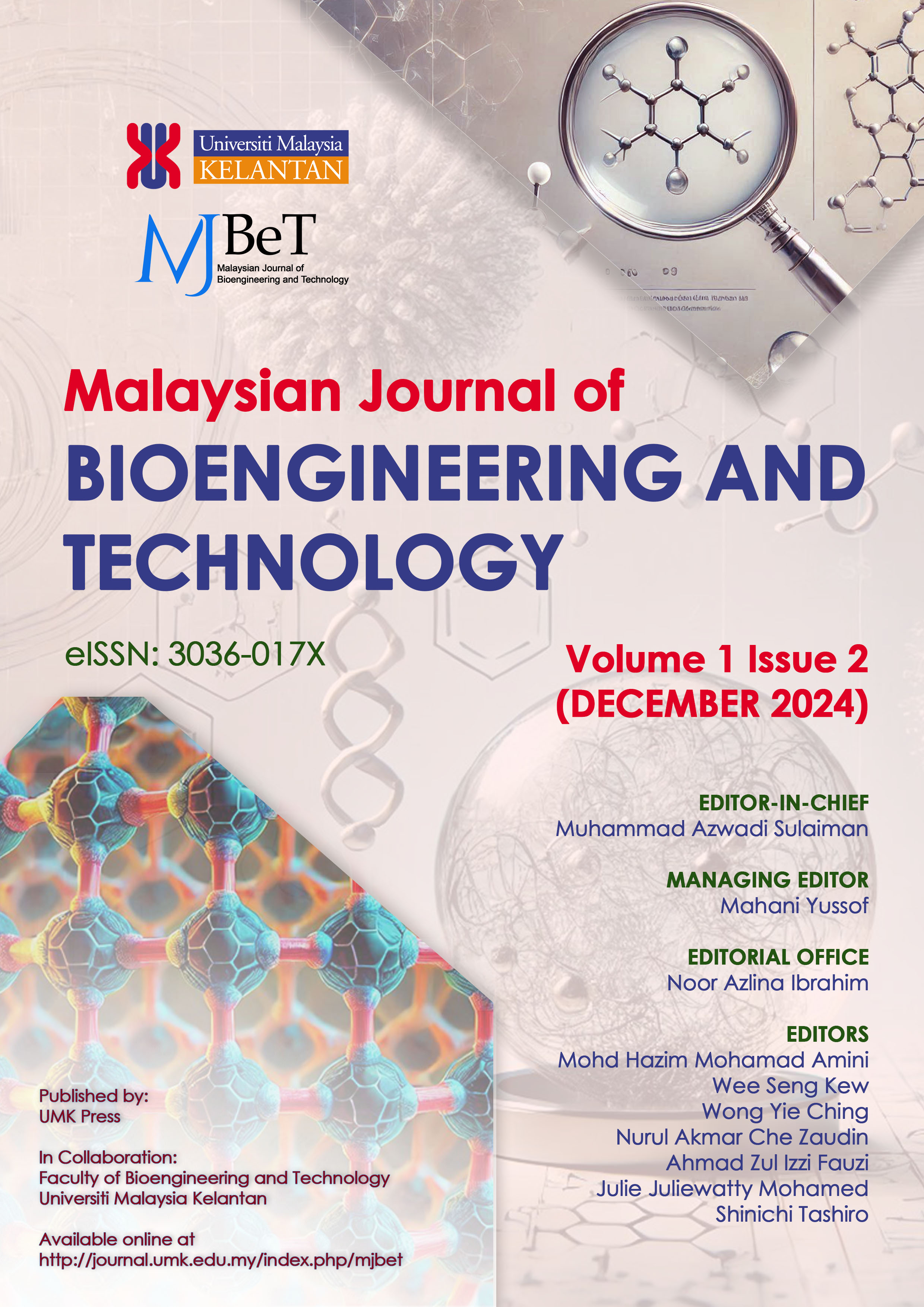Effect of Polyvinyl Alcohol (PVA), Cellulose Nanocrystals (CNC), and ?-Polylysine (?-PL) Biocomposites for Fresh Chillies Coating Application
DOI:
https://doi.org/10.70464/mjbet.v1i2.1477Keywords:
Biodegradable coatings, post-harvest preservation, weight loss, shelf-life, food wasteAbstract
The rising demand for fresh fruits and vegetables has resulted in considerable issues in post-harvest preservation, especially with weight loss and rotting. This study examines the efficacy of a biodegradable biocomposite coating made from polyvinyl alcohol (PVA), cellulose nanocrystals (CNC), and ?psilon polylysine (?-PL) in prolonging the shelf-life of chilies. The investigation specifically analyses the post-harvest performance of chilies with and without stems when treated with 17 solutions of PVA/CNC/?-PL biocomposite suggested by the Response Surface Method (RSM). The fresh chilies were dipped into the PVA/CNC/?-PL biocomposite solution for 30 seconds, weight loss inspection of the chilies was evaluated in 21 days, and stored in the chiller at 9 °C. Findings demonstrate that stemless chilies coated with the nanocomposite experience markedly reduced weight loss, which gains the lowest weight loss results of 5.92 % during storage in comparison to their stem chilies, the lowest weight loss result is 17.5 %. The protective layer significantly diminished moisture loss and preserved fruit firmness, hence enhancing freshness duration. The stemless chilies, coated with the PVA/CNC/?-PL nanocomposite, exhibited enhanced preservation properties, indicating that the lack of stems, along with the coating formulation, improves the fruit's resistance to dehydration and decay. This work demonstrates that PVA/CNC/?-PL nanocomposites may serve as a novel, eco-friendly approach to diminish waste and enhance the shelf-life of fresh products. The results suggest favorable consequences for sustainable agriculture, minimizing food waste and enhancing supply chain logistics. Future research may investigate the scalability of this method and its applicability to other perishable fruits and vegetables.


